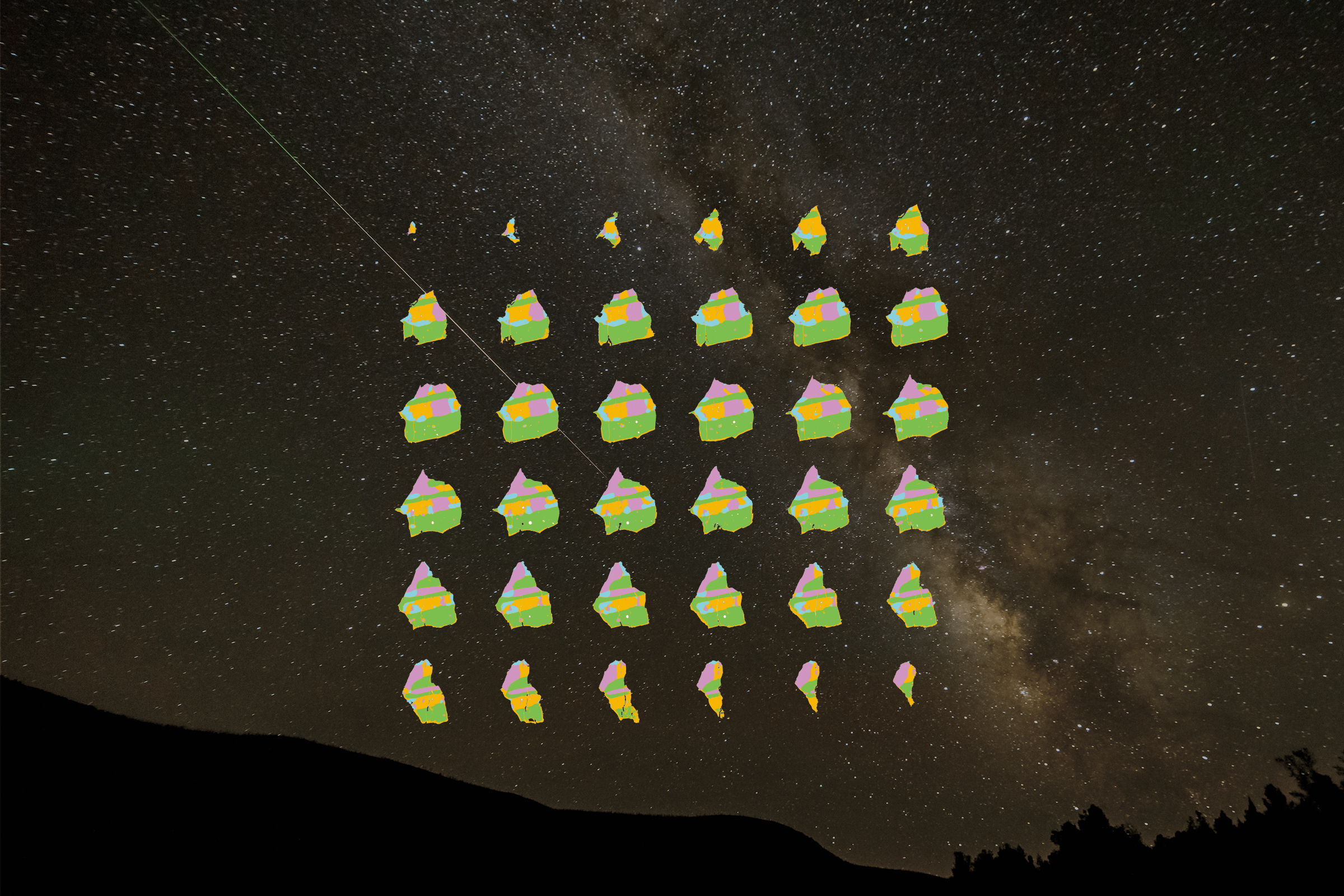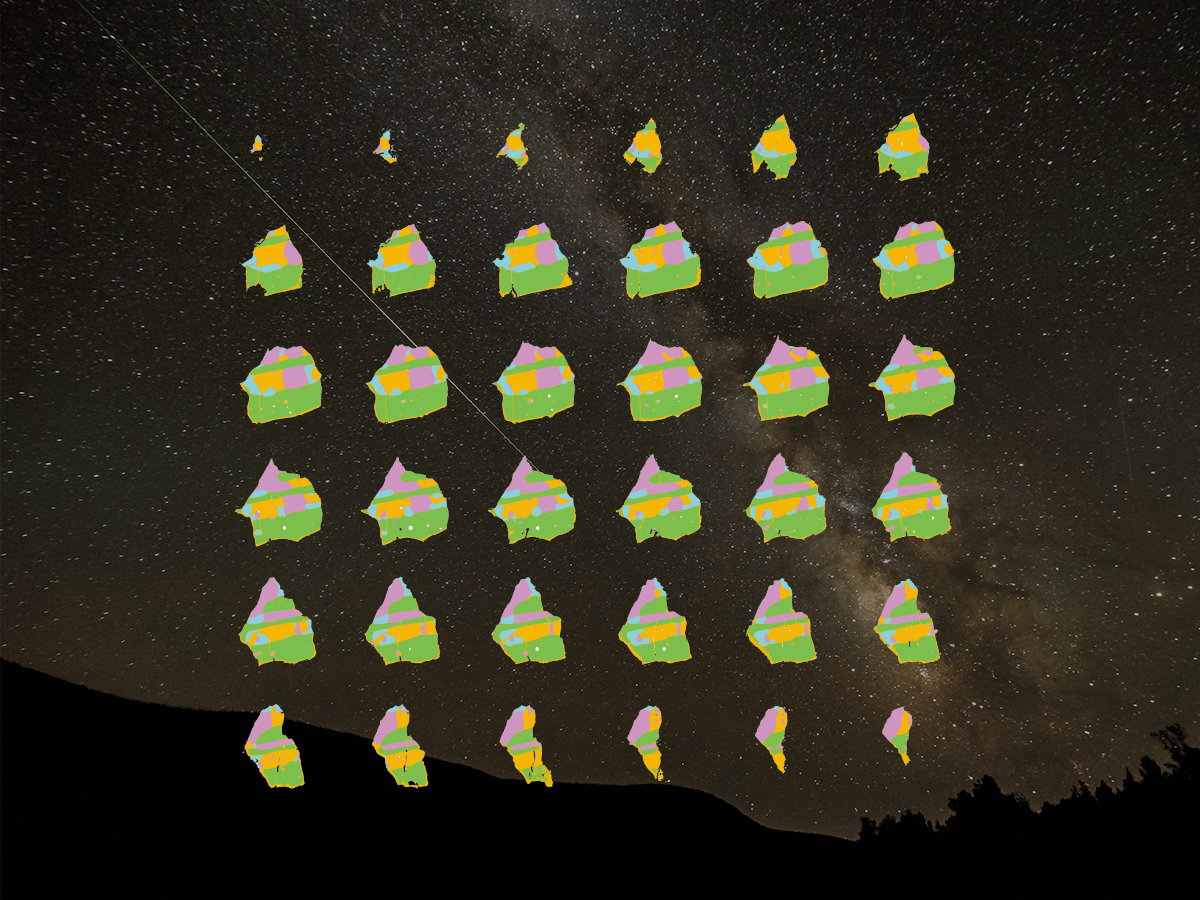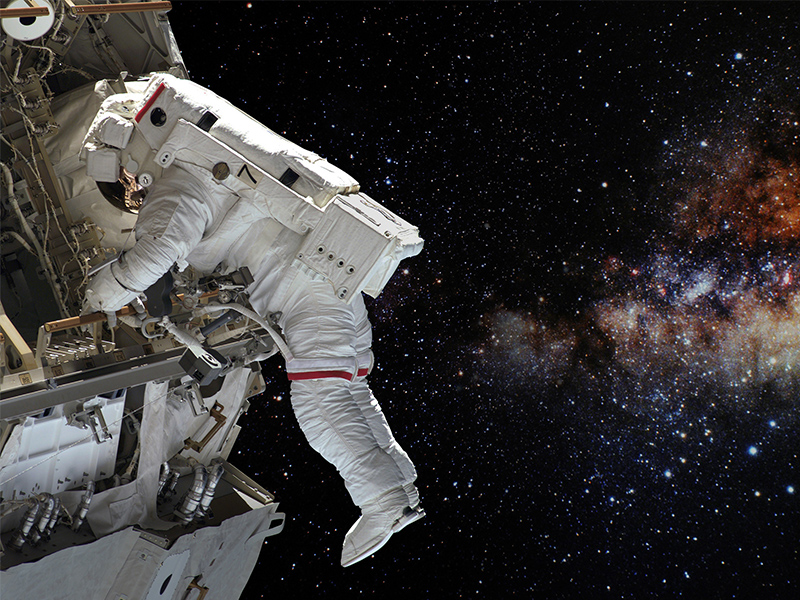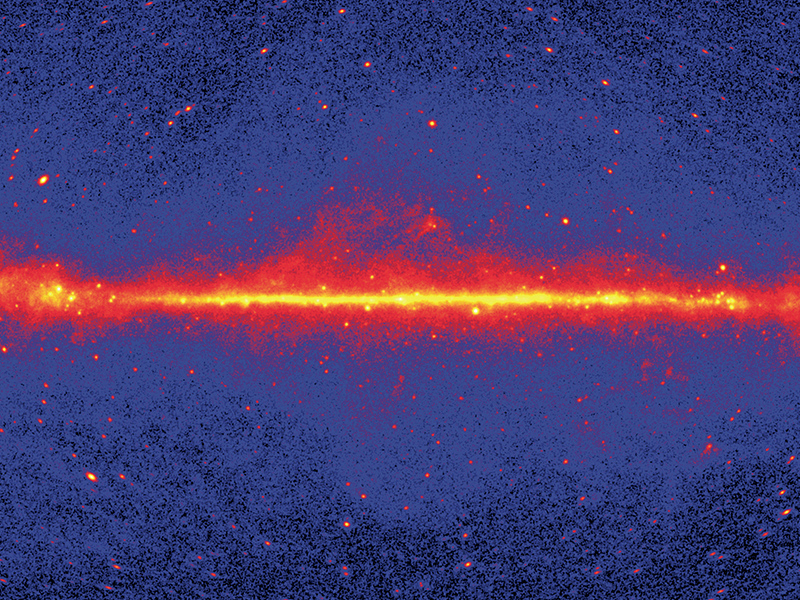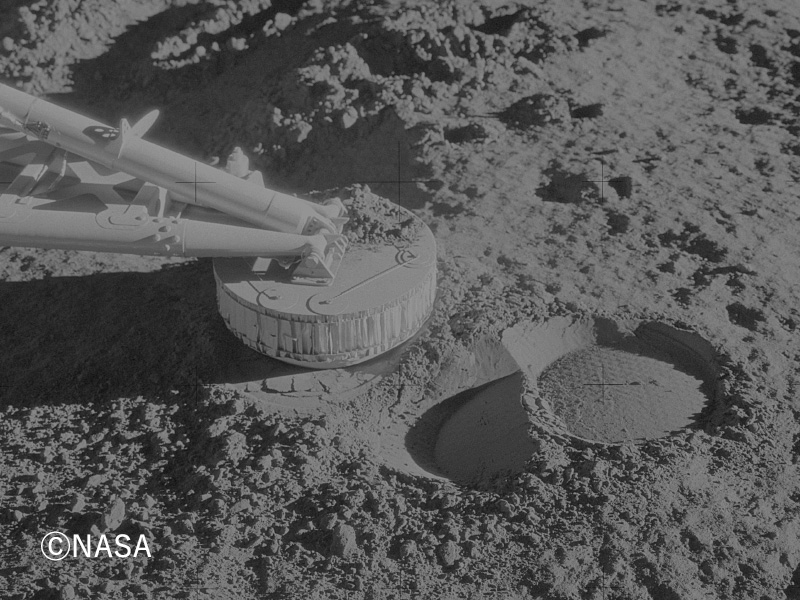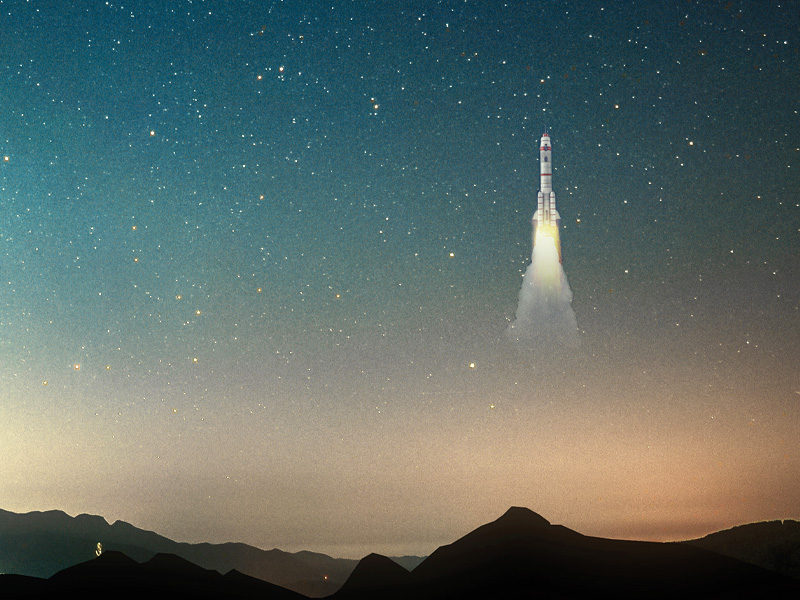STORY #1
Approaching the Origin of the solar System Water Discovered in a Meteorite
Akira Tsuchiyama, Ph.D.
Professor, Research Organization of Science and Technology
Successional sliced images of a particle from the asteroid Itokawa sampled by Hayabusa.
The color corresponds to the following minerals:
● Olivine ● Ca-rich pyroxene ● Ca-poor pyroxene ● plagioclase ● nickel-iron
The memory of the early solar
system recorded in a meteorite
that flew its way to Earth
On April 22, 2021, a surprising announcement was made by Akira Tsuchiyama’s research group. They claimed to have discovered carbon dioxide (CO2)-rich liquid water in the Sutter’s Mill meteorite that fell to California in 2012. In the blink of an eye, news about this report that comes close to determining our solar system’s origin spread across the globe.
According to Tsuchiyama, the Sutter’s Mill meteorite is classified as a carbonaceous chondrite, which is a primitive meteorite formed around the time the solar system was formed. It is thought that many of them contain carbonaceous substances (organic materials) and water from that time. The solar system was formed about 4.6 billion years ago. The asteroids and other small celestial bodies in the solar system and the meteorites that come flying from such bodies contain, to this day, information and records of the celestial bodies of the early solar system. In particular, carbonaceous chondrites that contain water and organic materials are considered to be an important key to understanding the origins of water and life on Earth.
“However, such water typically exists as a hydroxyl (OH) or as water molecules (H2O) within the crystal structure of minerals and has never been discovered as liquid water,” says Tsuchiyama. Tsuchiyama’s team used an X-ray nano-CT at SPring-8, a large synchrotron radiation facility, and a transmission electron microscopy (TEM) for their analysis, and became the first in the world to discover the existence of liquid water in carbonaceous chondrite.
Ten years prior to this discovery, Tsuchiyama conducted a 3D structural analysis of the surface materials of the asteroid Itokawa that the Hayabusa spacecraft sampled. The X-ray CT that Tsuchiyama uses in his research has the advantage of enabling non-destructive analysis to understand the cross-sectional and internal structure of particles. Nearly 2,000 particles that Hayabusa returned to Earth were mostly less than 100 μm in diameter, and Tsuchiyama’s group conducted 3D structural analysis on approximately 40 samples. Two major findings were made.
One was that the surface materials corresponded to the meteorites known as LL ordinary chondrites. “This was as expected,” says Tsuchiyama. This was hypothesized based on prior research, but it was this discovery that confirmed it.
What excited Tsuchiyama was the other discovery when he examined the 3D structure and size of the particulates. The sample particles of various shapes and sizes, such as fragments that seemed to have formed through the high-speed impact of meteorites and round particles that seemed to have been formed by colliding with each other and wearing down their edges through such abrasive actions. “This indicates that a variety of phenomena had occurred on the planetoid’s surface. While planetoids like Itokawa are small, it is not a dead world. We learned that its surface is a lot more active than we had imagined,” says Tsuchiyama.

Furthermore, in November of 2019, Tsuchiyama’s group made a landmark discovery that confirmed the existence of water. They discovered “fossil asteroidal ice” in the Acfer 094 meteorite, a carbonaceous chondrite that had fallen to a desert region.
“Looking at the XCT slice images, we found there were several porous areas that seemed to have formed when the ice melted,” Tsuchiyama reveals. He further explains that when the meteorite’s parent body was formed, typically the pores inside the materials would be crushed through compaction. The presence of pores there to this day indicates that there used to be something solid, and ice is the most probable candidate. Tsuchiyama’s team further discovered that the fine-grained matrix, that is an aggregate of amorphous (non-crystalline) silicates (an ingredient of rocks), had weak aqueous alteration. This was the trace of an interaction between the water that came out after the ice melted and its surrounding silicates, proof that ice had no doubt once filled these pores.
“In the early solar system, there was a disk-like region where planets and asteroids were formed. In low-temperature regions that were far from the sun, ice and silicate dust were accreted with each other to form asteroids, which are the parent bodies of meteorites. They would gradually move towards the sun as it grew, and as they moved closer to the sun, the temperature increased. When they came close to what is known as the snow line, the place where ice would evaporate, chunks of ice and silicate particles started to form due to the sintering effect by the heat from the sun. Then, along with dust that does not contain ice, they started to accreted onto the surface of the meteorite parent body. After that, as the asteroids (planetoids) go beyond the snowline, their ice melts from the sun’s heat, and micro-sized pores are created. That is the ‘fossil asteroidal ice’ that we observed,” Tsuchiyama explained.
Where did the asteroid originate?
Finding the answer through
CO2-rich water
While they found ‘fossil asteroidal ice’ in Acfer 094 meteorite, they were unable to observe the ice itself as it had melted and vanished. Then in 2021, Tsuchiyama’s team finally succeeded in discovering liquid in the Sutter’s Mill meteorite.
In searching for water inside meteorites, Tsuchiyama focused on a mineral called calcite (CaCO3). As mentioned earlier, when the asteroid formed in the early solar system grew and moved towards the sun and crossed the snow line, the ice melted and reacted with the minerals, leading to aqueous alteration. Calcite is considered to have precipitated from the aqueous solution. Thus, if water is to be found, they thought there is a chance for it to still be included in the interior of calcite grains.
When Tsuchiyama cut out a grain the size of approximately 30 μm that contained calcite particles and ran a 3D structural analysis using an X-Ray nano-CT, he found many inclusions over a few micrometers inside the calcite particles. However, unfortunately, the inclusions even with crystalline surfaces were empty. The water that used to be there must have escaped sometime over the last 4.6 billion years.
However, Tsuchiyama took a much closer look and found that innumerable nanosized inclusions, smaller than 1 μm, existed in the calcite. Tsuchiyama thought to himself, ‘if water is to be found there, it must be frozen at –100ºC; if so, TEM could detect the crystal.’ When he made the TEM observation, in addition to finding diffraction spots that indicated calcite crystals at room temperature (20ºC), new spots appeared at –100ºC. This was the moment when the water long sought by the meteorite researchers of the world was discovered.
“We then learned that this was not ice formed by freezing water (H2O), but ice that is called CO2 ice or CO2 hydrate. That is to say, the liquid in the inclusion was not liquid water (H2O) but a fluid that contained CO2. The ratio of CO2 was found to be over 15% as well,” he said.
He explained that based on the existence of a CO2-rich fluid, it is possible to narrow down the area in which the meteorite’s parent body was formed. “In the early solar system, the low-temperature regions far from the sun had snow lines where ice like that of H2O, CO2, and CO would appear in that order. These recent findings indicate that the parent body of the Sutter’s Mill meteorite was formed on the outside of the CO2 snow line and inside the CO snow line.”
In recent solar system formation theories, it is thought that planets and small celestial bodies did not remain in the same location since their formation, but rather their orbits changed (or moved) after their formations. Following this model, Jupiter was formed slightly inside the current orbit and moved to its current location. “If we were to infer the formation regions of the celestial bodies from the snow line, the parent body of the Sutter’s Mill meteorite was formed in the low-temperature region outside the region where Jupiter was formed. Then, along with Jupiter’s orbital change, it gradually moved inward towards the asteroid belt between Mars and Jupiter,” explained Tsuchiyama. The discovery of water containing CO2 also raised credibility of the new dynamic solar system formation model.
In December 2020, samples Hayabusa 2 collected from the asteroid Ryugu returned to Earth. Tsuchiyama’s group has taken on the responsibility of analyzing these samples as they have done so with the first Hayabusa mission. The surface material of Ryugu is thought to be carbonaceous chondrite, just as the Sutter’s Mill meteorite, and there are expectations of finding liquid water and organic matters. The research conducted by Tsuchiyama’s group may someday close in on solving the mystery of the birth of the solar system and the origin of life itself.
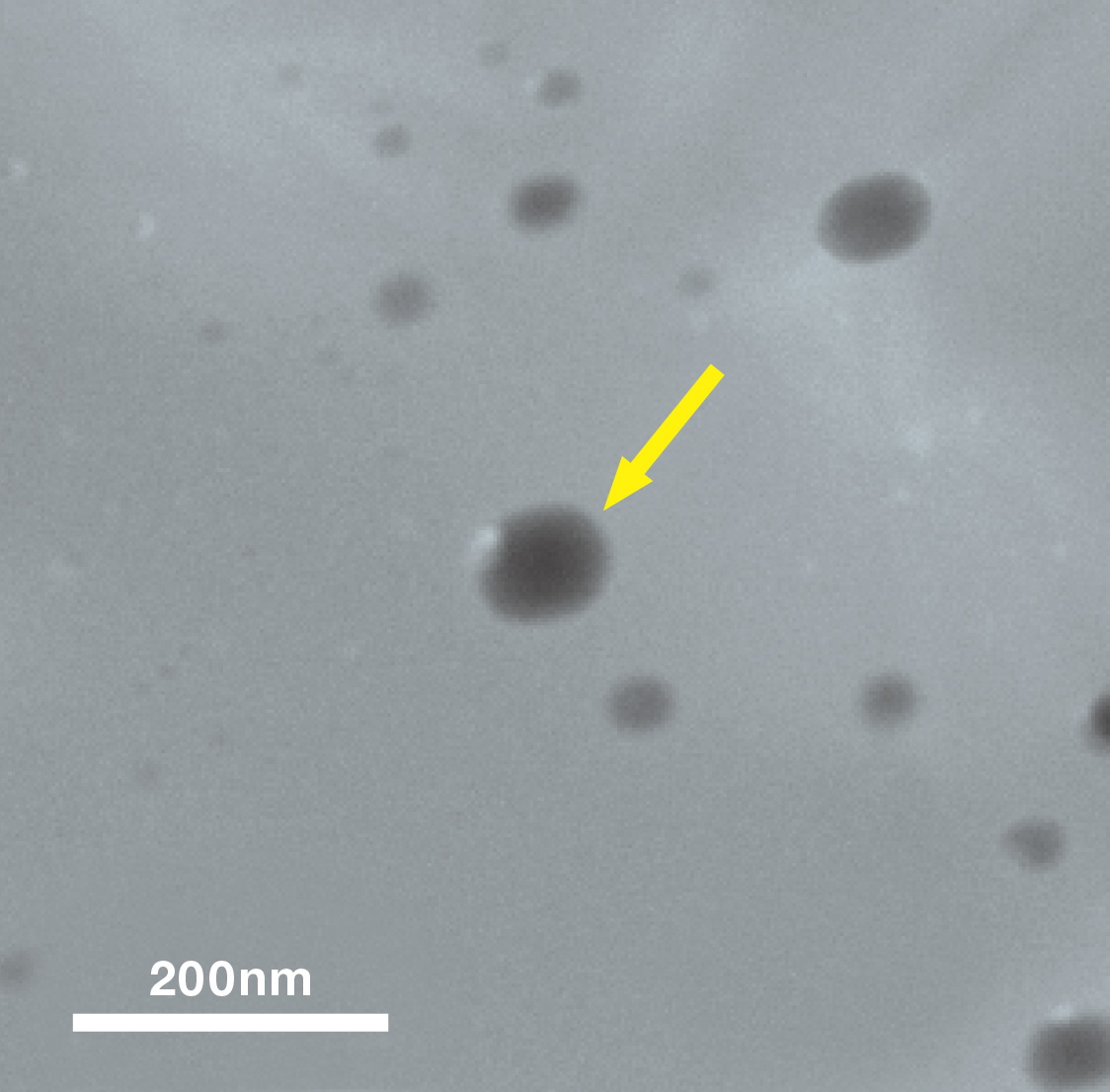
TEM observation of a mineral (calcite) in the Sutter’s Mill meteorite; ‘CO2-rich fluid’ was discovered in its nano inclusion (the tip of the yellow arrow)
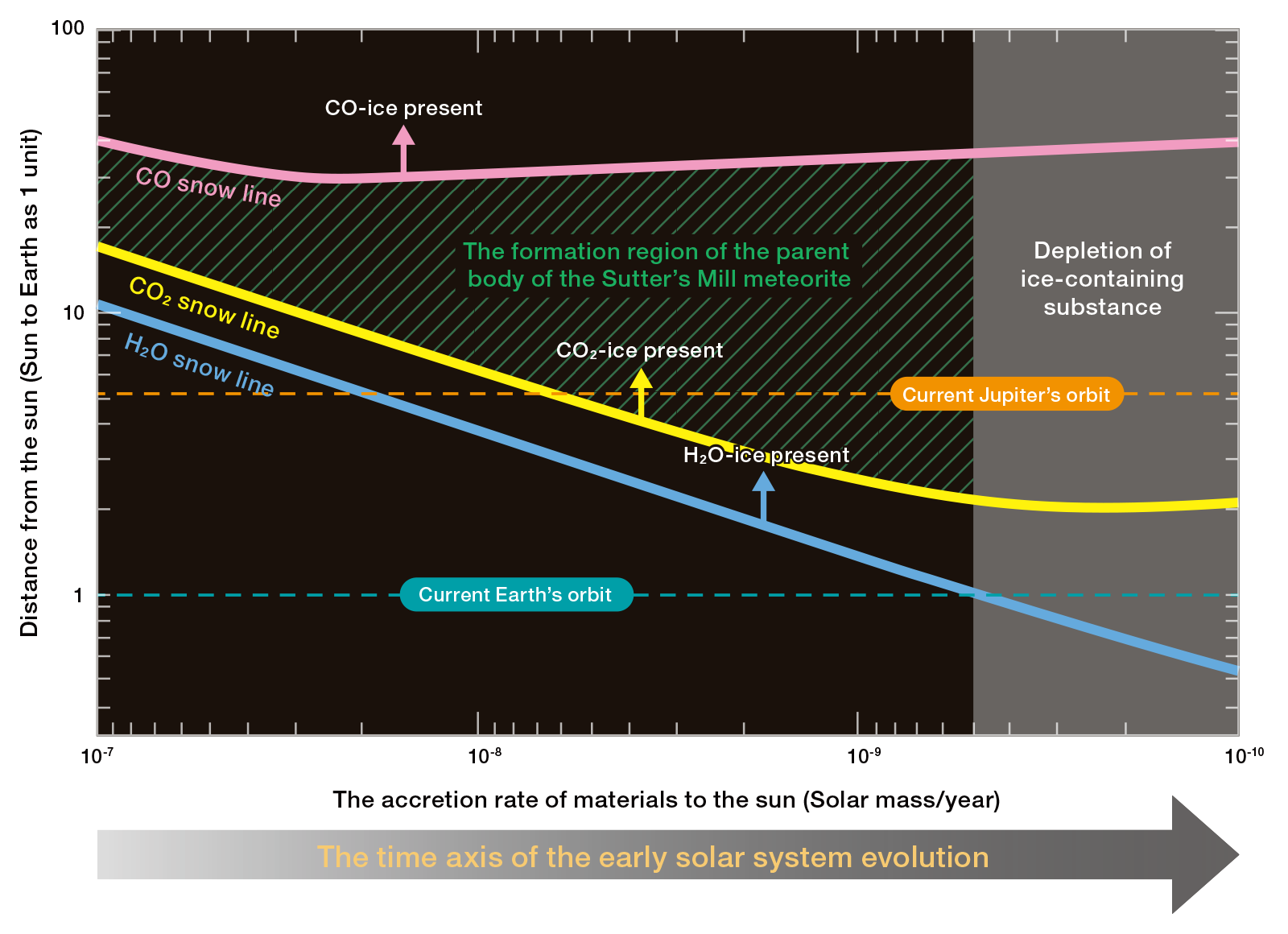
The formation region of the Sutter’s Mill meteorite parent body and the H2O, CO2, and CO snow lines. The likely formation area of the parent body of the Sutter’s Mill meteorite (surrounded by the CO2 snow line, CO snow line, and the area in which materials containing ice is depleted) is indicated in a diagram that shows how the distance from the sun for each snowline changed over time (expressed as the accretion rate of materials to the sun). Jupiter is thought to have formed in an orbit closer to the sun (close to 3 au) than its current orbit. Thus, the formation region of the meteorite’s parent body would have been outside Jupiter’s orbit. Jupiter eventually moved to its current orbit, and along with this the meteorite’s parent body is thought to have moved to the asteroid belt inside Jupiter’s orbit.

- Akira Tsuchiyama, Ph.D.
- Professor, Research Organization of Science and Technology
- Specialties: Mineralogy, Planetary sciences
- Research Themes: Formation and evolution of primitive solar-system materials based on material science
On July 7, the International Astronomical Union (IAU) approved the asteroid 1999 TF36 to be named (40795) Akiratsuchiyama. This was based on the recommendation of LONEOS (Lowell Observatory Near-Earth-Object Search), an institution that searches for asteroids and comets that are orbiting near Earth. It is thought to be a rocky celestial body approximately 3 km in diameter, and the reflectance is approximately 40%.
